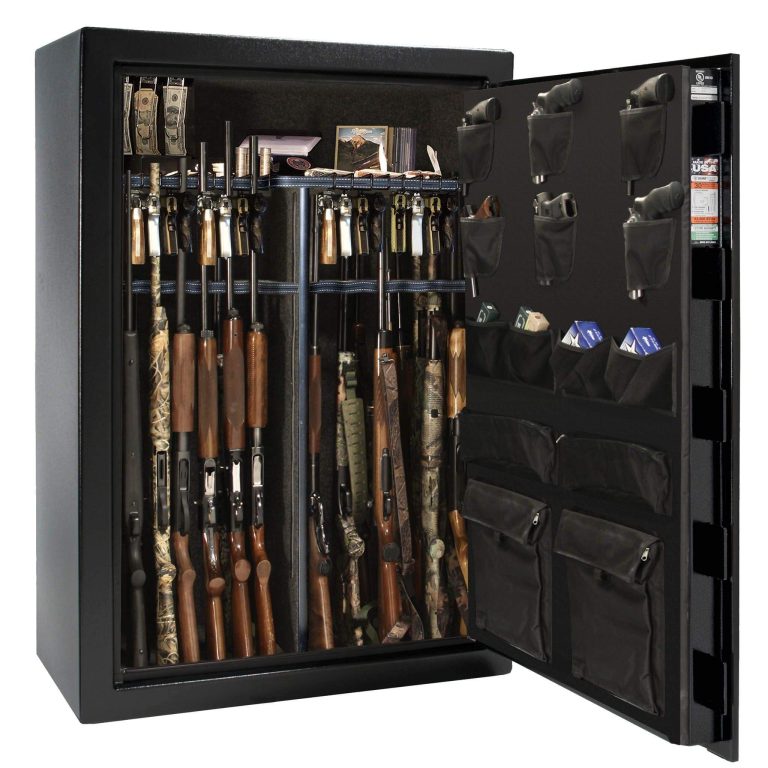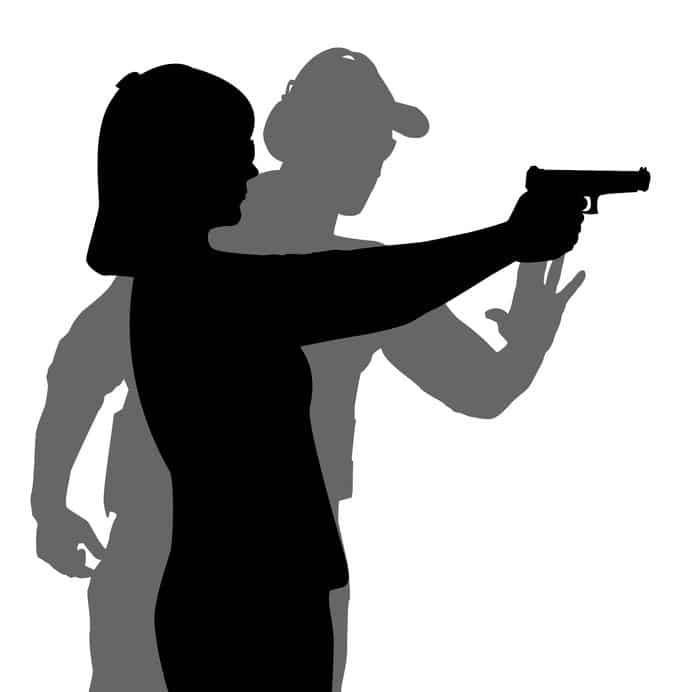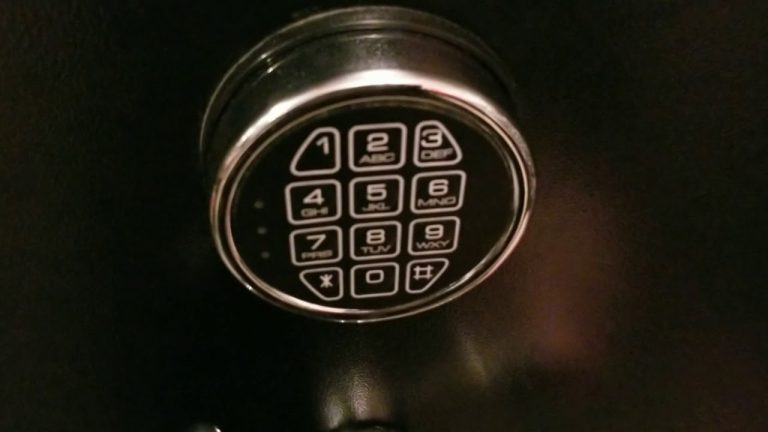Gun Safety Tips for Home: Keep Your Family Protected
Store firearms unloaded and locked away. Keep ammunition in a separate, secure location.
Gun safety at home is crucial to prevent accidents and ensure the well-being of your family. Responsible gun ownership involves proper storage, handling, and education. Always store firearms unloaded and locked in a secure place. Use gun safes or lockboxes, and ensure they are out of reach of children.
Keep ammunition in a separate, secure location. Educate all household members about the dangers of firearms and the importance of safety protocols. Regularly review and practice gun safety measures. These steps can significantly reduce the risk of accidental injuries or fatalities involving firearms in the home. Prioritizing gun safety creates a safer environment for everyone.
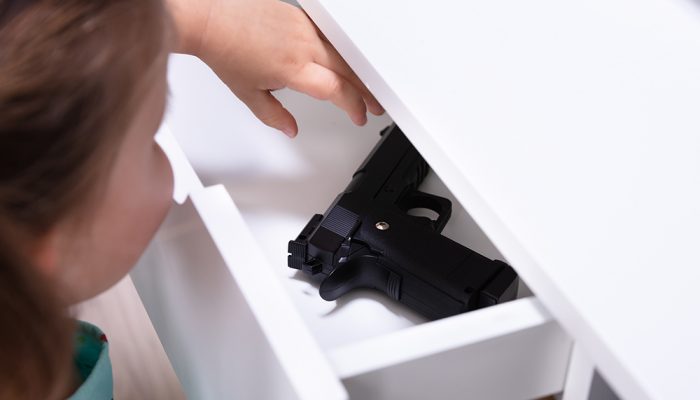
Credit: www.phila.gov
Importance Of Gun Safety
Gun safety is crucial for every home. It ensures the well-being of loved ones and prevents accidents. Understanding and practicing proper gun safety can save lives and create a secure environment. Here, we discuss the importance of gun safety and provide essential tips.
Protecting Loved Ones
Guns in the home can be dangerous without proper safety measures. Protecting loved ones should be the top priority. Ensure guns are stored securely. Use gun safes or locked cabinets. Keep firearms unloaded and locked away. Only authorized individuals should have access.
Preventing Accidents
Accidental shootings can occur if guns are not handled correctly. Preventing accidents is essential to gun safety. Follow these tips to reduce risks:
- Always assume a gun is loaded.
- Keep your finger off the trigger until ready to shoot.
- Never point a gun at anything you don’t intend to shoot.
- Store ammunition separately from firearms.
Educate family members about gun safety. Teach children the dangers of guns. Ensure they know to avoid touching firearms and to alert an adult if they find one.
Implementing these practices helps create a safer environment. Gun safety is vital for all households with firearms.
Safe Gun Storage
Proper gun storage is crucial for keeping your home safe. Storing guns securely prevents accidents and unauthorized access. Here are key tips for safe gun storage.
Choosing Secure Locations
Choose a hidden and secure location for gun storage. Avoid places like nightstands or closets. These are easy for children to find.
Keep guns out of sight and reach. A high shelf can be a good option. Ensure the location is known only to responsible adults.
Using Gun Safes
Using a gun safe is one of the best storage options. Gun safes provide robust security features. They keep guns locked away and inaccessible.
- Biometric Safes: These safes open with fingerprint recognition. They offer quick access and high security.
- Combination Safes: Require a code to open. They are reliable and secure.
- Key-Operated Safes: Open with a key. Always keep the key in a secure place.
Consider the size of the safe. It should fit all your firearms and accessories. Ensure the safe is fireproof and water-resistant for extra protection.
Anchor the safe to the floor or wall. This prevents thieves from stealing the entire safe.
Regularly check and maintain your gun safe. This ensures it functions correctly when needed.
Educating Family Members
Educating family members about gun safety is crucial. Everyone in the home should understand the potential dangers and responsibilities. This includes both children and adults. Proper education can prevent accidents and ensure a safe environment.
Teaching Children About Guns
Children are naturally curious. It’s important to teach them about guns early.
- Never touch a gun: Teach children to never touch a gun.
- Tell an adult: If they see a gun, they should tell an adult.
- Guns are not toys: Explain that guns can be very dangerous.
These simple rules can save lives. Ensure children understand and follow them.
Adult Responsibility
Adults have a significant role in gun safety. They must store guns securely and responsibly.
- Use a gun safe: Store guns in a locked safe.
- Keep ammunition separate: Store ammunition in a different location.
- Educate all family members: Ensure everyone knows the safety rules.
Responsible gun ownership starts with adults. Lead by example and practice safe habits.
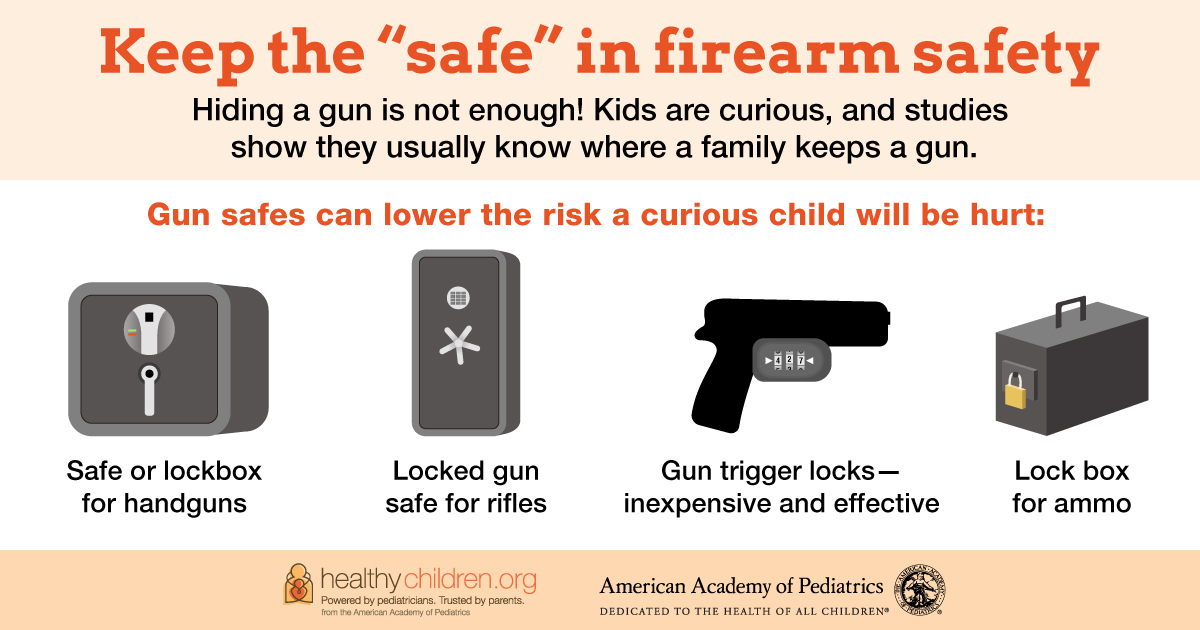
Credit: www.healthychildren.org
Proper Handling Techniques
Learning proper handling techniques ensures safety for everyone at home. It reduces the risk of accidents and injuries. This section covers essential tips for safe gun handling.
Safe Loading And Unloading
Always keep the gun pointed in a safe direction while loading and unloading. Ensure the safety mechanism is engaged. Check the chamber and magazine for any bullets.
- Keep your finger off the trigger.
- Load bullets into the magazine carefully.
- Insert the magazine into the gun securely.
- Chamber a round if necessary.
To unload, follow these steps:
- Engage the safety.
- Remove the magazine.
- Clear the chamber by pulling back the slide.
- Inspect the chamber to ensure no bullets remain.
Correct Grip And Stance
A proper grip improves control and accuracy. Use both hands for a secure hold. Place your dominant hand high on the grip. Wrap your fingers around the handle.
- Keep your thumb on the same side as your fingers.
- Use your non-dominant hand to support the gun.
The correct stance is crucial for stability. Stand with your feet shoulder-width apart. Bend your knees slightly for balance.
| Stance | Description |
|---|---|
| Isosceles | Both arms fully extended, feet parallel. |
| Weaver | Strong foot back, arms bent, body slightly turned. |
Keep your weight forward, leaning slightly into the gun. This helps manage recoil effectively.
Regular Maintenance
Regular maintenance of your firearms is crucial for safety and performance. Keeping your guns clean and in good working condition helps prevent accidents. It also ensures your firearm operates smoothly when needed. Below are essential maintenance tips, including cleaning procedures and an inspection checklist.
Cleaning Procedures
Cleaning your firearm regularly is vital. Follow these steps:
- Unload the gun: Ensure the firearm is unloaded. Remove all ammunition.
- Disassemble: Separate the parts as per the manual.
- Clean the barrel: Use a cleaning rod and patch to clean the barrel.
- Clean other parts: Wipe down all other parts with a cloth.
- Lubricate: Apply a small amount of oil to moving parts.
- Reassemble: Put the firearm back together carefully.
Always clean your firearm in a well-ventilated area. Wear gloves to protect your hands from chemicals.
Inspection Checklist
Perform regular inspections using this checklist:
- Check the barrel: Ensure it is clear of obstructions.
- Inspect the action: Make sure it operates smoothly.
- Examine the safety: Ensure the safety switch functions properly.
- Look at the sights: Confirm they are aligned and secure.
- Check for wear: Look for signs of wear and tear on all parts.
- Test the trigger: Ensure the trigger pulls smoothly.
Regular inspections help identify potential issues before they become serious problems. Keeping a log of your inspections can be very helpful.

Credit: uwk.com
Emergency Plans
Having a well-thought-out emergency plan is crucial for gun safety at home. It ensures everyone knows what to do if an incident occurs. This can save lives and prevent panic.
Creating A Safety Protocol
Begin by establishing a clear safety protocol for your household. This should include the following steps:
- Ensure guns are always stored unloaded and in a secure place.
- Keep ammunition in a separate, locked location.
- Use gun locks or safes to prevent unauthorized access.
Regularly review these protocols with all household members. Include children in these discussions to ensure they understand the rules.
Emergency Contacts
Make a list of emergency contacts and keep it accessible. This should include:
| Contact | Phone Number |
|---|---|
| Local Police | 911 |
| Fire Department | 911 |
| Local Hospital | (Your Local Hospital Number) |
| Poison Control | 1-800-222-1222 |
Teach children how to use these contacts in case of an emergency. Practice these steps regularly to ensure everyone remembers them.
Legal Considerations
Understanding legal considerations is crucial for responsible gun ownership at home. This section will cover important aspects to ensure you comply with the law and maintain safety.
Understanding Local Laws
Each state has its own gun laws. Some areas have stricter regulations. Check your local laws for specifics. Know the legal requirements for buying and storing firearms. Ignorance can lead to legal trouble. Stay informed to stay safe.
Here’s a brief table summarizing common regulations:
| State | Permit Required | Storage Regulations |
|---|---|---|
| California | Yes | Locked storage required |
| Texas | No | Recommended but not mandatory |
| New York | Yes | Locked storage required |
Ownership Responsibilities
Owning a gun comes with responsibilities. You must ensure safe storage. Keep firearms away from children. Use a gun safe or lockbox. Store ammunition separately.
Consider the following tips:
- Always treat every gun as if it is loaded.
- Keep your finger off the trigger until ready to shoot.
- Never point a gun at anything you do not intend to destroy.
- Store guns unloaded and locked away.
Follow these rules to enhance safety and reduce risks. Remember, responsible gun ownership is key to home safety.
Resources And Training
Ensuring gun safety at home requires proper resources and training. Proper education can save lives and prevent accidents. Below are some tips for finding resources and training opportunities.
Finding Safety Courses
Gun safety courses teach essential skills. These courses are available in many places. Here are some ways to find them:
- Local Gun Ranges: Many gun ranges offer safety courses.
- Online Platforms: Websites provide various gun safety courses.
- Community Centers: Check local community centers for classes.
Utilizing Community Resources
Community resources can offer valuable support. They provide information and training. Here are some community resources to consider:
- Police Departments: Many offer free gun safety training.
- Public Libraries: They often have materials on gun safety.
- Local Gun Clubs: These clubs provide training and resources.
Using these resources helps keep your home safe. Always prioritize safety and education.
Frequently Asked Questions
What Are Basic Gun Safety Rules At Home?
Always keep the gun unloaded when not in use. Store it in a locked, secure place. Keep ammunition separate.
How Can Children Be Kept Safe From Guns?
Educate children about gun dangers. Keep guns locked and out of reach. Use gun safes and trigger locks.
What Is The Importance Of Gun Safes?
Gun safes prevent unauthorized access. They reduce the risk of accidents. They also protect guns from theft.
How Should Ammunition Be Stored At Home?
Store ammunition in a locked, separate location from guns. Use a secure container. Keep it out of children’s reach.
Conclusion
Prioritize gun safety to protect your family and home. Secure firearms in a locked safe. Educate family members about gun safety practices. Regularly check and maintain your firearms. Practice responsible ownership to prevent accidents. Implementing these tips can ensure a safer environment for everyone in your household.
Stay vigilant and proactive.


